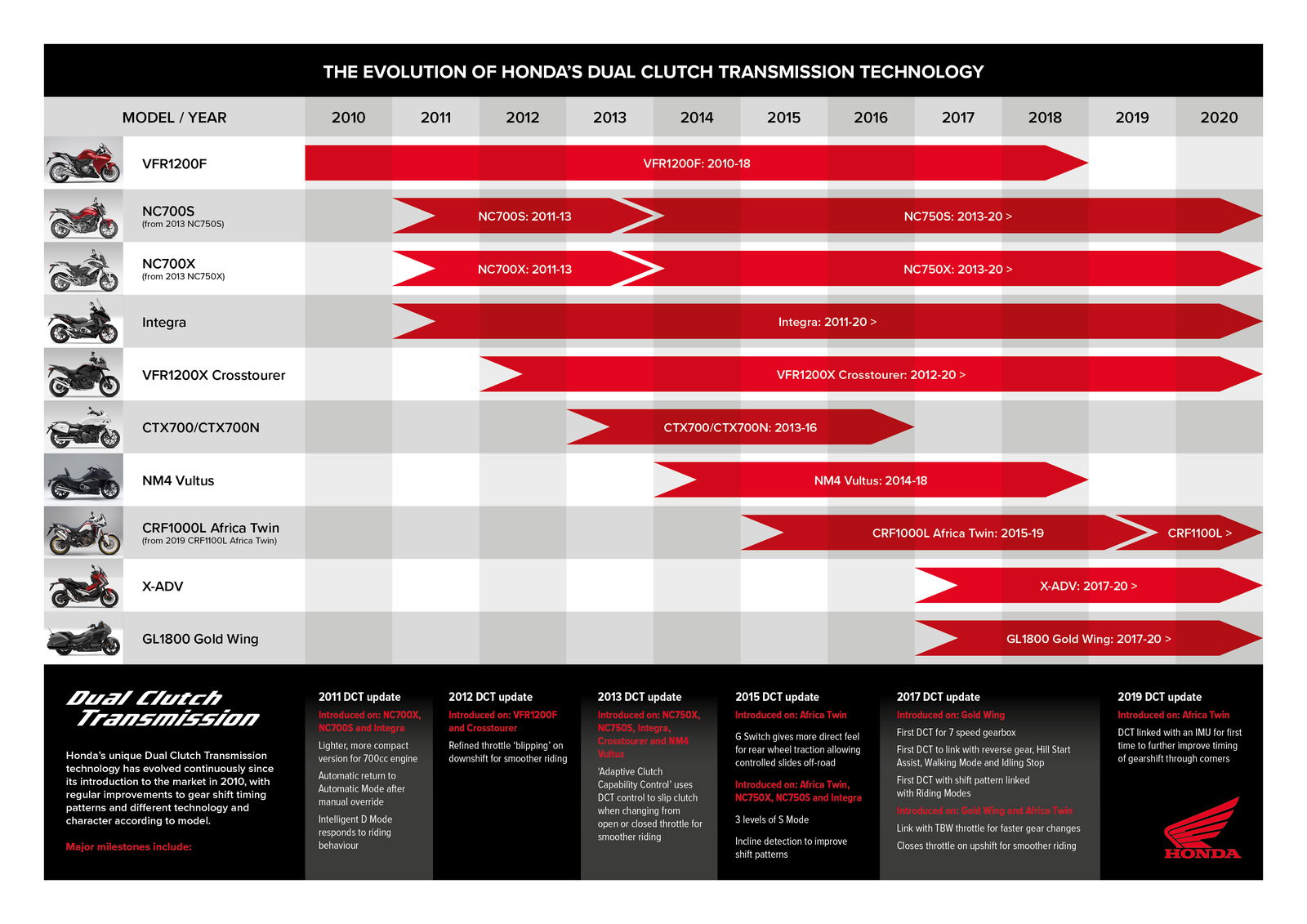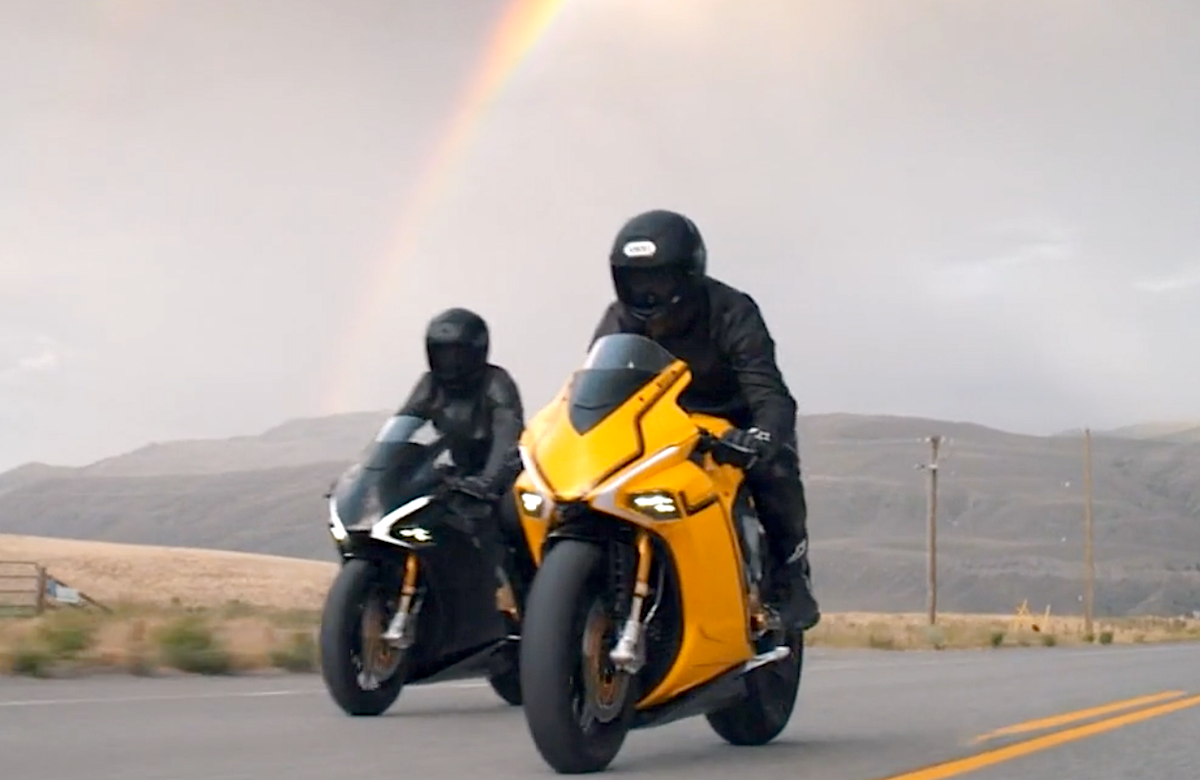Honda celebrates 10 years of Dual Clutch Transmission
The Honda Dual Clutch Transmission first appeared ten years ago on the VFR1200F and has gone from strength to strength ever since

HONDA and the Dual Clutch Transmission (DCT) have been around for ten years having first appeared in the Honda Range on the VFR1200F.
Fast forward to today and DCT gearboxes feature in a varied array of Honda’s touring and adventure line-up. From the quirky X-ADV (based around the powertrain of the DCT enabled NC750) to the flagship tourer in the form of the latest generation Honda Gold Wing. DCT is alive and kicking, and sales are doing better than you might expect.
Honda CRF1100L Africa Twin UK Road Test
Having first appeared in dealerships across Europe in 2010, Honda’s DCT remains a unique proposition in the world of motorcycles. In total, over 140,000 machines with DCT have been sold in Europe, and in 2019, 45% of Africa Twins, 52% of NC750X’s and 67% of Gold Wings sold in Europe were the DCT version.
Having ridden most versions of the current DCT range and over the past six years, I can vouch for the improvements and refinements made to the system. Honda credit the success of the system to constantly evolving the mechanics and electronics of the DCT. Examples include an off-road focussed ‘G switch’ addition for the Africa Twin and X-ADV, and synchronisation with Hill Start Assist, Walking Mode and Idling Stop on the flagship GL1800 Gold Wing luxury tourer.

How does the Honda DCT system work?
DCT is an automated, electro-hydraulic clutch and shift operation gearbox, comprising a pair of independent clutch packs housed in one unit, each of which are connected to separate gear sets – one clutch works with start-up, 1st, 3rd and 5th gears, the other with 2nd, 4th and 6th gears.

Gear changes are made either in Manual mode by the rider using the ‘paddle-shift’ style triggers on the left handlebar, or in Automatic mode according to shifting schedules dictated by constantly-monitored parameters including vehicle speed, engine rpm and throttle opening angle. In either case, no clutch lever or footshift is needed. During a gear change, as one clutch disengages, the other clutch simultaneously engages the target gear to ensure a consistent, ultra-fast and seamless shift, with no loss of drive to the rear wheel.
In addition to the natural advantages for sporty riding that this brings, DCT also allows the rider to focus more on their riding line, braking points, cornering and acceleration. Further benefits include reduced rider fatigue, low stress urban riding, the impossibility of stalling and greatly reduced pitching of the motorcycle during gear changes.


